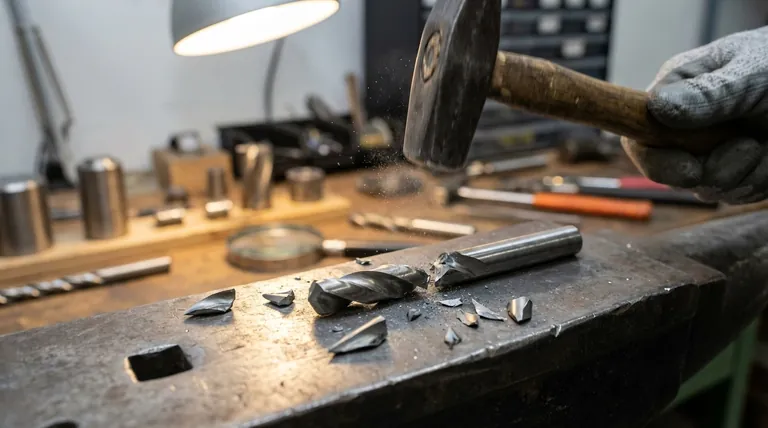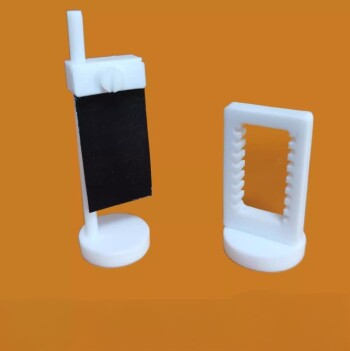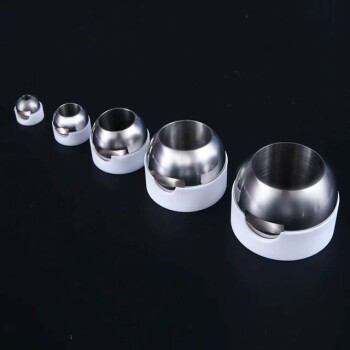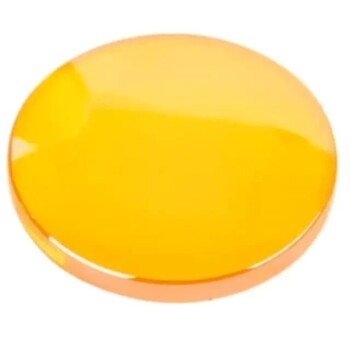In short, no. Pure tungsten is not shock resistant. Despite its reputation for strength, it is an inherently brittle material at room temperature and can shatter if subjected to a sudden, sharp impact.
The core misunderstanding arises from confusing a material's hardness with its toughness. Tungsten is one of the hardest and densest metals, giving it incredible strength and wear resistance, but it lacks the ability to absorb impact energy, making it prone to fracture.

The Critical Difference: Hardness vs. Toughness
To understand tungsten's properties, we must first distinguish between two terms that are often used interchangeably: hardness and toughness. They are not the same.
Defining Hardness: Tungsten's Extreme Wear Resistance
Hardness is a material's ability to resist surface scratching, abrasion, and indentation. On this front, tungsten and its compounds are exceptional.
Tungsten is a very hard, dense metal. Its most famous compound, tungsten carbide, is so hard that it is nearly comparable to diamond. It can only be effectively polished or cut with abrasives of superior hardness.
Defining Toughness (Shock Resistance): Tungsten's Key Weakness
Toughness, or shock resistance, is a material's ability to absorb energy and deform under stress without fracturing. Think of it as the opposite of brittleness.
Pure tungsten has a very rigid crystal structure that resists bending. When faced with a sudden impact, it cannot deform to absorb the energy. Instead, that energy goes directly into creating a crack, causing the material to shatter.
Where Tungsten's "Strength" Reputation Comes From
If it's so brittle, why is tungsten considered a "strong" material? Its strength lies in specific conditions where its brittleness is not a factor.
Unmatched High-Temperature Strength
Tungsten has the highest melting point of all pure metals at 3,422°C (6,192°F). While other metals soften and weaken dramatically when heated, tungsten retains its structural integrity, making it invaluable for applications like rocket nozzles and high-temperature furnace components.
High Compressive Strength
Tungsten performs exceptionally well under slow, steady pressure (compression). Its rigid structure resists being crushed, which is a different type of force than a sudden impact.
Exceptional Density
With a density of 19.3 g/cm³, tungsten is nearly twice as dense as lead. This property makes it ideal for applications requiring a great deal of mass in a small space, such as balancing weights, but it does not contribute to its shock resistance.
Understanding the Trade-offs and Solutions
The brittleness of tungsten is a well-known engineering challenge. Depending on the application, this limitation is either accepted or engineered around.
The Impact of Form and Processing
The properties of tungsten can change based on how it is manufactured. For example, tungsten wire is specially processed and doped (intentionally mixed with small amounts of other elements) to make it more ductile and less prone to sagging, even at room temperature. This is very different from a solid, sintered block of pure tungsten.
The Alloy Solution: Tungsten Carbide
In tools and industrial applications, you rarely find pure tungsten. Instead, you find tungsten carbide cemented with a binder metal like cobalt. The tungsten carbide provides the extreme hardness and wear resistance, while the softer, tougher cobalt matrix holds the carbide grains together and absorbs impact energy, preventing the tool from shattering.
Temperature Dependence
Tungsten's brittleness is most pronounced at room temperature. As it is heated to several hundred degrees, it passes a "brittle-to-ductile transition temperature" and becomes significantly more malleable and less likely to fracture from impact.
Making the Right Choice for Your Application
Understanding this distinction is critical for selecting the right material for your needs.
- If your primary focus is wear resistance and hardness: Tungsten and its carbide alloys are exceptional choices, but they must be designed in a way that protects them from sharp impacts.
- If your primary focus is high shock resistance or toughness: Tungsten is a poor choice. Materials like tool steels, titanium alloys, or even certain polymers are far better at absorbing impact energy.
- If your primary focus is performance at extreme temperatures: Tungsten is a world-class candidate, provided the application does not involve significant impacts during its cold state.
Ultimately, you must match the unique properties of the material to the specific demands of your task.
Summary Table:
| Property | Tungsten's Performance | Key Takeaway |
|---|---|---|
| Hardness | Excellent | Resists scratching, abrasion, and wear. |
| Toughness (Shock Resistance) | Poor | Brittle at room temperature; shatters on impact. |
| High-Temperature Strength | Exceptional | Retains strength at extreme temperatures (melting point: 3,422°C). |
| Compressive Strength | Excellent | Performs well under slow, steady pressure. |
Choosing the right material is critical for your project's success.
While tungsten is unsuitable for shock-resistant applications, its unparalleled hardness and high-temperature performance make it ideal for specific lab and industrial settings. KINTEK specializes in providing the precise lab equipment and consumables your work demands.
Let our experts help you select the perfect material for your needs. Contact us today to discuss how our solutions can enhance your laboratory's efficiency and results.
Visual Guide

Related Products
- Custom PTFE Teflon Parts Manufacturer for Hydrothermal Synthesis Reactor Polytetrafluoroethylene Carbon Paper and Carbon Cloth Nano-growth
- Custom PTFE Teflon Parts Manufacturer for PTFE Ball Valve Seat
- Custom PTFE Teflon Parts Manufacturer for Culture Dish and Evaporation Dish
- Custom PTFE Teflon Parts Manufacturer for Hollow Etching Flower Basket ITO FTO Developing Glue Removal
- Custom PTFE Teflon Parts Manufacturer Corrosion Resistant Cleaning Rack Flower Basket
People Also Ask
- Is PTFE corrosion resistant? Discover the Ultimate Chemical Resistance for Your Lab
- Why is tungsten used in furnaces? Unmatched Heat Resistance for Extreme Temperatures
- What is the purpose of a thin film? Engineering Surfaces for Superior Performance
- How do you maintain vacuum pressure? Master the balance between gas removal and gas load for stable performance.
- What is the process of thin film making? A Guide to Controlled Deposition Techniques



















